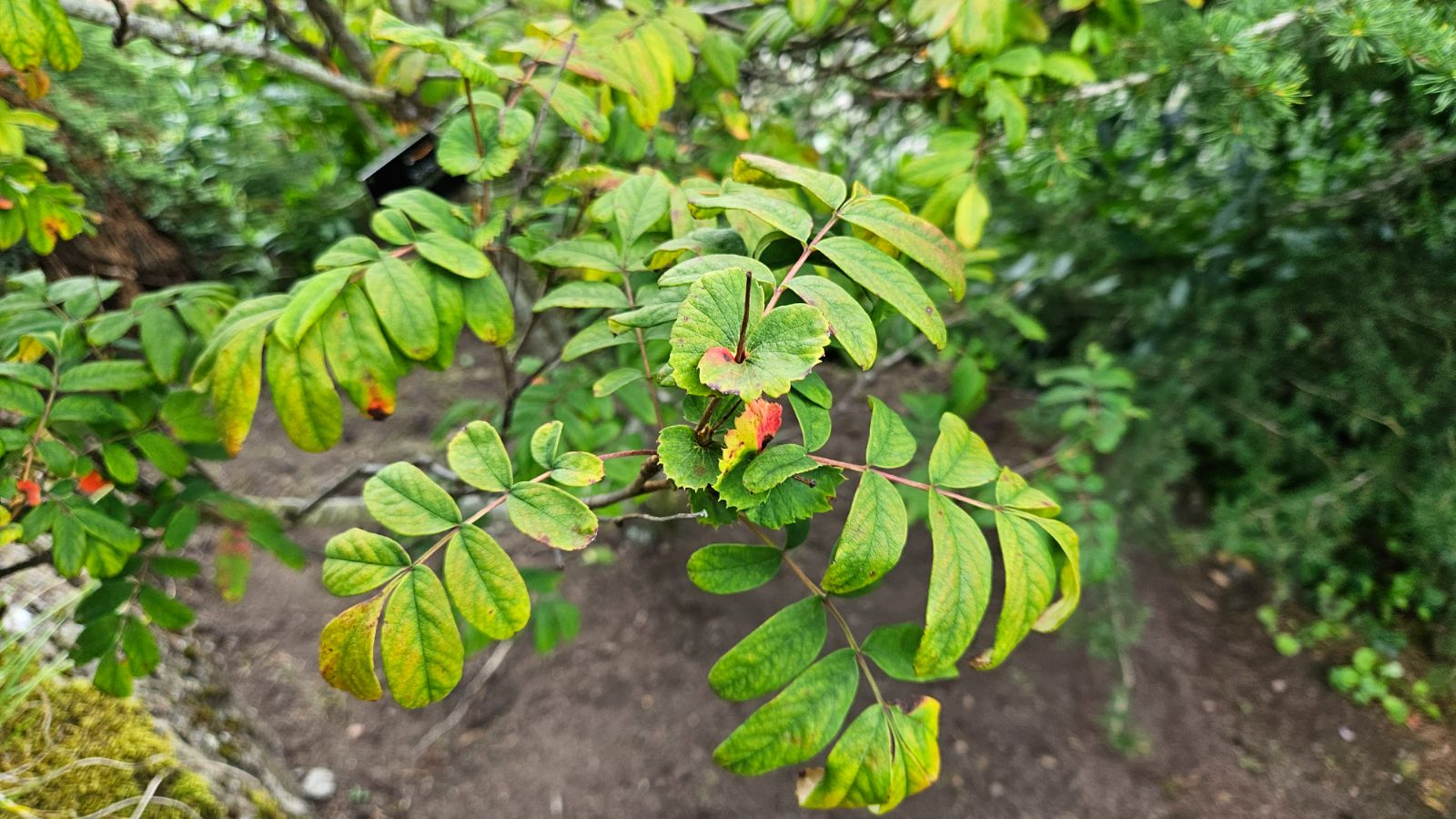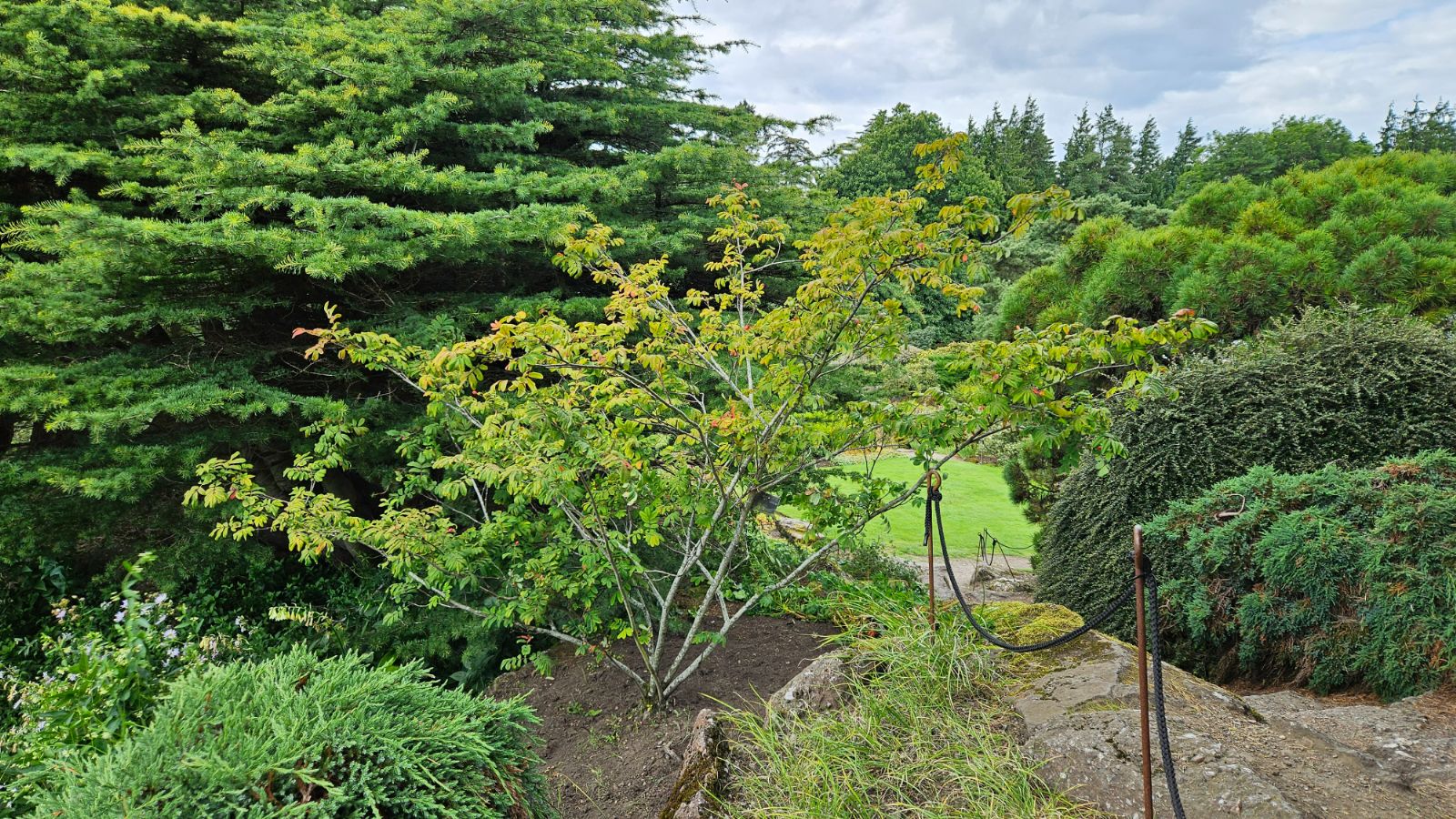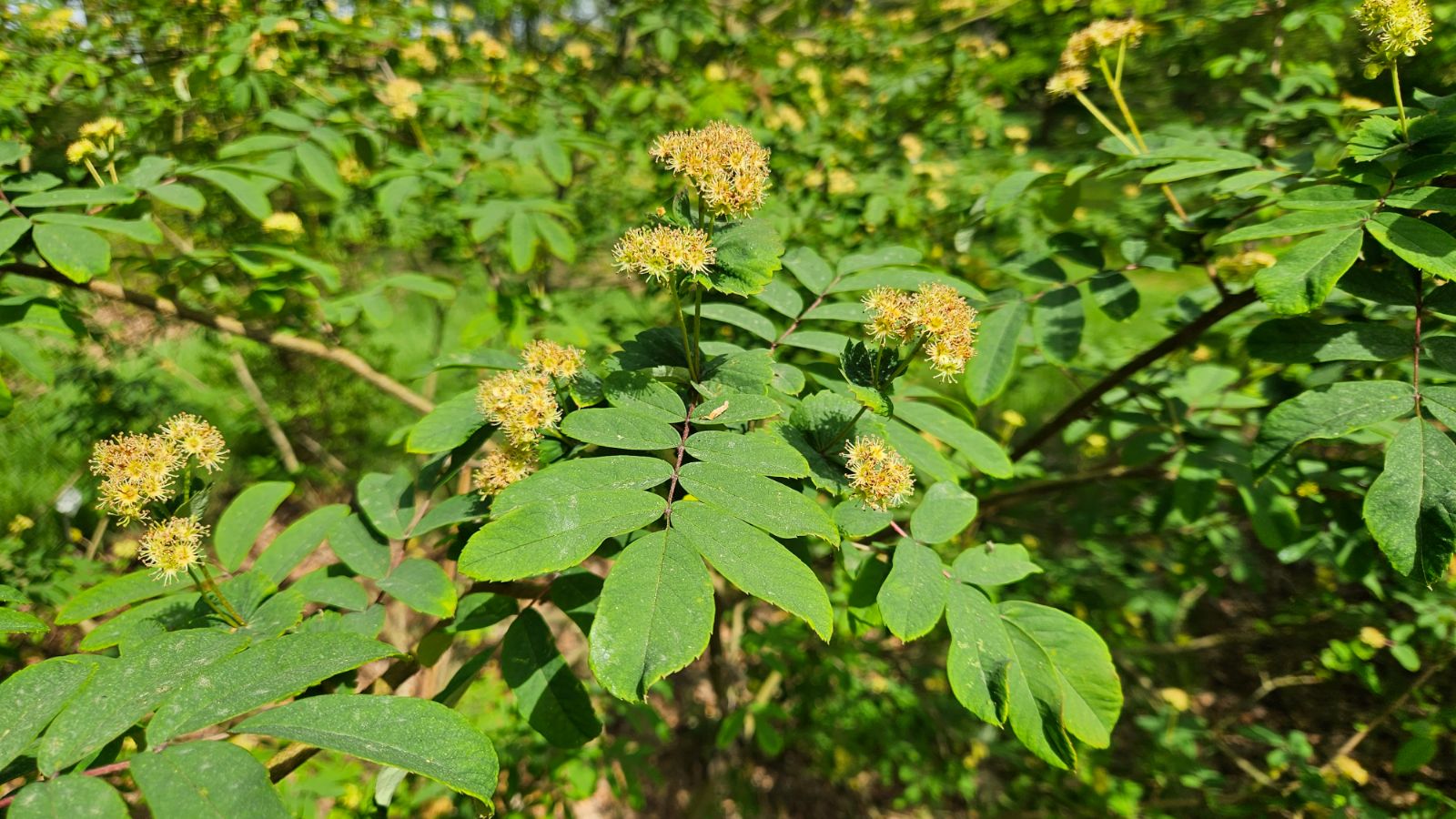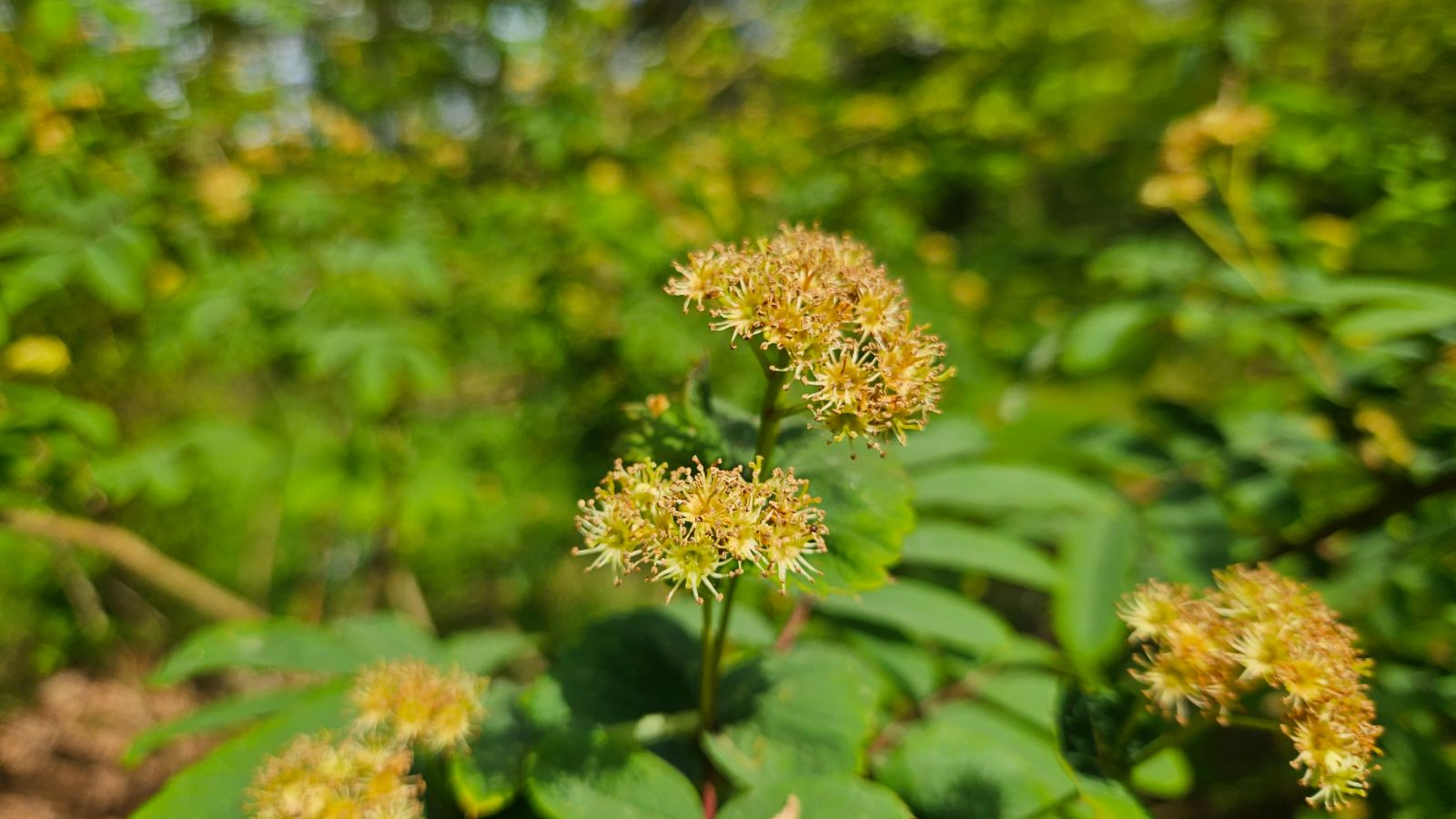Sorbus gracilis
Sponsor
Kindly sponsored by
This genus has been sponsored and new text is being prepared.
Credits
Article from Bean's Trees and Shrubs Hardy in the British Isles
Recommended citation
'Sorbus gracilis' from the website Trees and Shrubs Online (treesandshrubsonline.
Genus
Synonyms
- Pyrus gracilis Sieb. & Zucc.
- S. schwerinii Schneid.
Other taxa in genus
- Sorbus americana
- Sorbus amoena
- Sorbus arachnoidea
- Sorbus aucuparia
- Sorbus carmesina
- Sorbus cashmiriana
- Sorbus commixta
- Sorbus coxii
- Sorbus decora
- Sorbus discolor
- Sorbus ellipsoidalis
- Sorbus esserteauiana
- Sorbus fansipanensis
- Sorbus foliolosa
- Sorbus forrestii
- Sorbus glabriuscula
- Sorbus glomerulata
- Sorbus helenae
- Sorbus hupehensis
- Sorbus hypoglauca
- Sorbus insignis
- Sorbus 'Joseph Rock'
- Sorbus khumbuensis
- Sorbus koehneana
- Sorbus kongboensis
- Sorbus kurzii
- Sorbus lingshiensis
- Sorbus matsumurana
- Sorbus microphylla
- Sorbus muliensis
- Sorbus olivacea
- Sorbus parvifructa
- Sorbus pohuashanensis
- Sorbus poteriifolia
- Sorbus prattii
- Sorbus pseudohupehensis
- Sorbus pseudovilmorinii
- Sorbus randaiensis
- Sorbus reducta
- Sorbus rinzenii
- Sorbus rubescens
- Sorbus rufopilosa
- Sorbus rushforthii
- Sorbus sambucifolia
- Sorbus sargentiana
- Sorbus scalaris
- Sorbus sitchensis
- Sorbus tianschanica
- Sorbus ursina
- Sorbus vilmorinii
- Sorbus wallichii
- Sorbus wilsoniana
A small, deciduous tree or shrub of compact, bushy habit, up to 12 ft, young shoots slender, downy. Leaves pinnate, with a main-stalk 3 to 6 in. long, carrying three to five pairs of leaflets which are roundish oblong to oblong, 1 to 21⁄2 in. long, toothed towards the rounded or pointed apex, slightly downy and pale beneath. Inflorescence few-flowered, 1 to 2 in. across, with persistent, green, fan-shaped stipules, which are toothed at the apex and about 7⁄8 in. wide. Flowers cream-coloured, opening in late May, about 1⁄4 in. wide, with orbicular petals. Fruits erect, about 3⁄4 in. long, yellowish red, pear-shaped in cultivated plants but usually globose or ellipsoid in the wild.
A native of the mountains of Japan, not introduced until the 1930s. It is a distinct and attractive species, the foliage being bronzy green at first, changing to rich red in the autumn. This character, combined with its relatively small size and slow growth, render it well adapted for small gardens. Out of flower it could be taken for a rose, and the likeness is greatest in autumn, when the scattered fruits stand out above the foliage like rose heps. A plant in Dr Fox’s collection was 12 ft high and 7 ft in spread when eighteen years planted, but there are older plants in gardens only 8 ft high.




